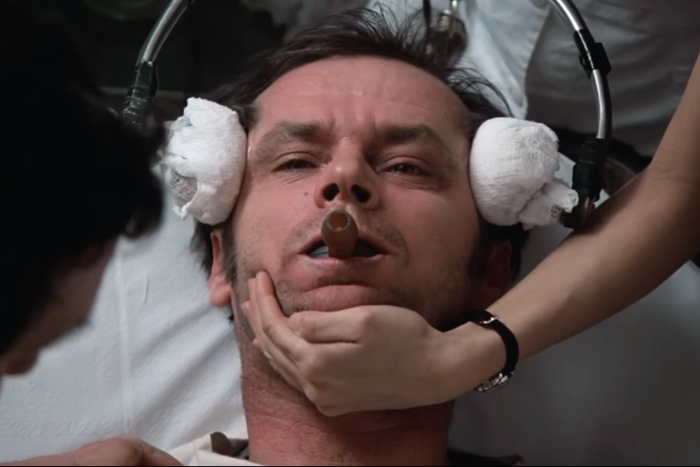Electroconvulsive therapy can be 'life saving', but still faces stigma, chief psychiatrist says
Posted
 Photo:
Films like One Flew Over the Cuckoo's Nest portray ECT as a painful and unpleasant experience. (Supplied)
Photo:
Films like One Flew Over the Cuckoo's Nest portray ECT as a painful and unpleasant experience. (Supplied)
An effective treatment for severe depression, mood disorders and other mental illnesses still faces high rates of stigma and misunderstanding, despite moves to increase access to the therapy, the ACT's chief psychiatrist says.
Key points:
- ACT Budget will invest in an electroconvulsive therapy suite at Canberra Hospital
- Chief psychiatrist says ECT is widely misunderstood and can be "life saving"
- Human rights case last year centred around the forced delivery of ECT
Electroconvulsive therapy (ECT), where a mild seizure is induced using electrical currents in order to alter the brain activity of people with certain mental illnesses, is currently only available at Calvary Hospital in Canberra.
But this week's territory budget would see more than $5 million put towards an ECT suite at Canberra Hospital, significantly expanding access to the treatment in Canberra.
Welcoming the news, chief psychiatrist Denise Riordan said the treatment's public perception had been tainted by popular culture.
Films like One Flew Over the Cuckoo's Nest depict ECT as an unpleasant procedure with little regard for a patient's comfort or wellbeing, but Dr Riordan said that was not reflective of how it was conducted.
"ECT itself can be a life-saving intervention," she said.
"People have misconceptions around ECT and I think that movies and media in certain instances have portrayed a particular presentation of ECT that bears very little relationship to how it's delivered in a contemporary service.
"People are given a general anaesthetic and a lot of muscle relaxant, so although we talk about it as electroconvulsive treatment … people sometimes associate that with electric shock treatment and think people are going to be having seizures."
Some patients 'completely recover' from mental illness
Dr Riordan said a majority of patients who underwent ECT experienced an easing of their symptoms, and that it alleviated mental health issues faster than other forms of care.
"In terms of percentages, somewhere between 60 to 70 per cent of people will say that they feel they have completely recovered from their illness after a course of ECT," she said.
"That's a very, very good response rate."
The ECT suite at Canberra Hospital would be contained within the adult mental health unit there and Dr Riordan said, based on population, the ACT should be aiming to deliver about 1,500 treatments each year.
While there are some side effects to ECT, most notably the chance of memory loss, Dr Riordan said it was a safe and viable treatment option for patients with severe mental health needs.
"I think it is really important that we use this as an opportunity to try and reduce some of the stigma that is associated with mental illness generally and then particularly with treatments like ECT," she said.
Electroconvulsive therapy has courted controversy in Australia recently, with the Supreme Court of Victoria ruling last year that patients forced to undergo the procedure had had their human rights breached.
But Dr Riordan said it offered real benefits for many patients who elected to be treated by ECT.
"We think it will make a very real difference to those people in Canberra who suffer from some of the more severe mental health-related difficulties," she said.
Mental Health Minister Shane Rattenbury said he understood some people may find ECT confronting, but that it would only be used when necessary.
"For those who think of ECT in its very primitive forms, it has come a long way, the research is very strong, and I can assure people that we will only be using it in those cases where it is absolutely suitable," he said.
"The medical evidence is clear that for some mental health conditions this can be extremely beneficial for people on their mental health recovery."
Topics: mental-health, health, canberra-2600, act, australia








